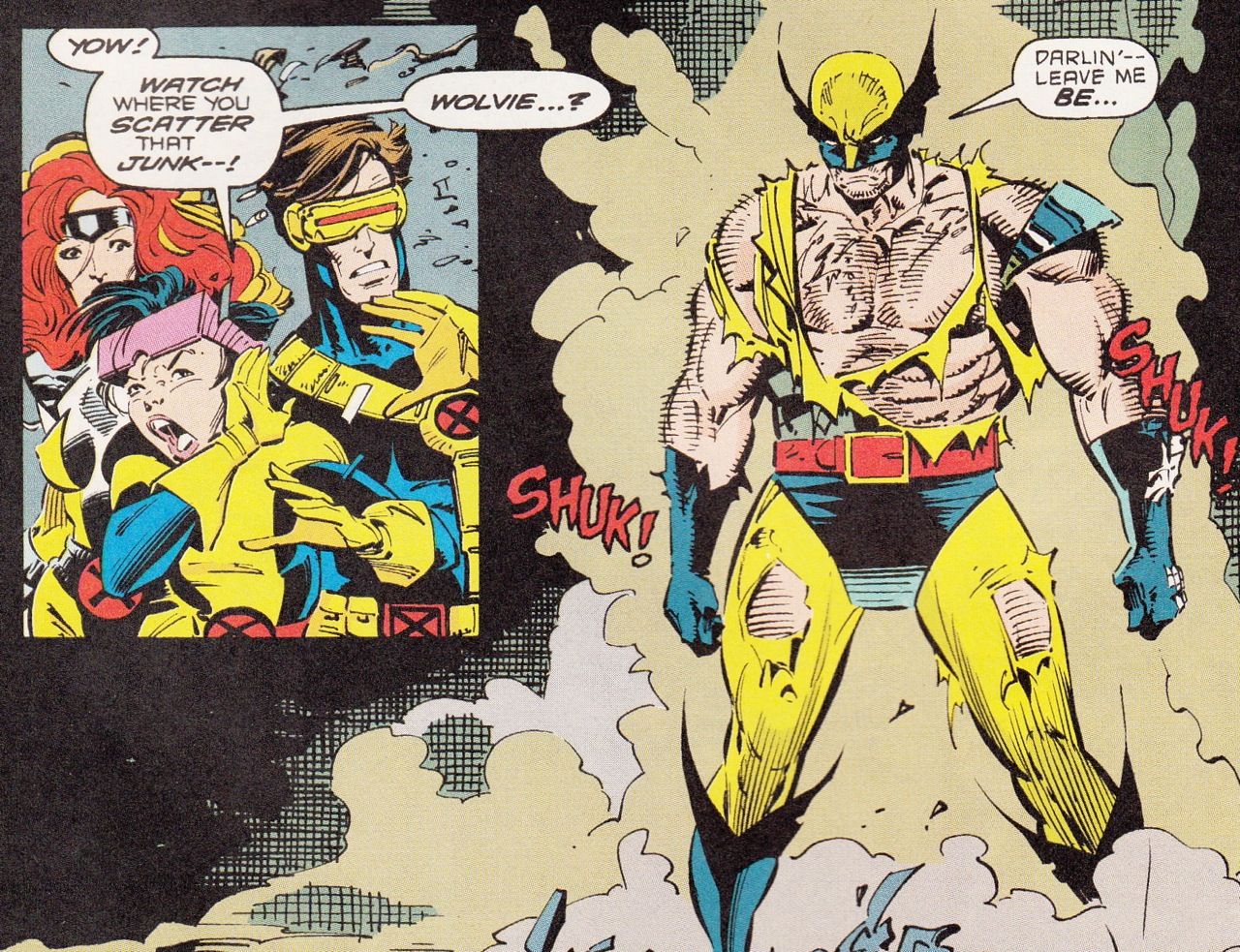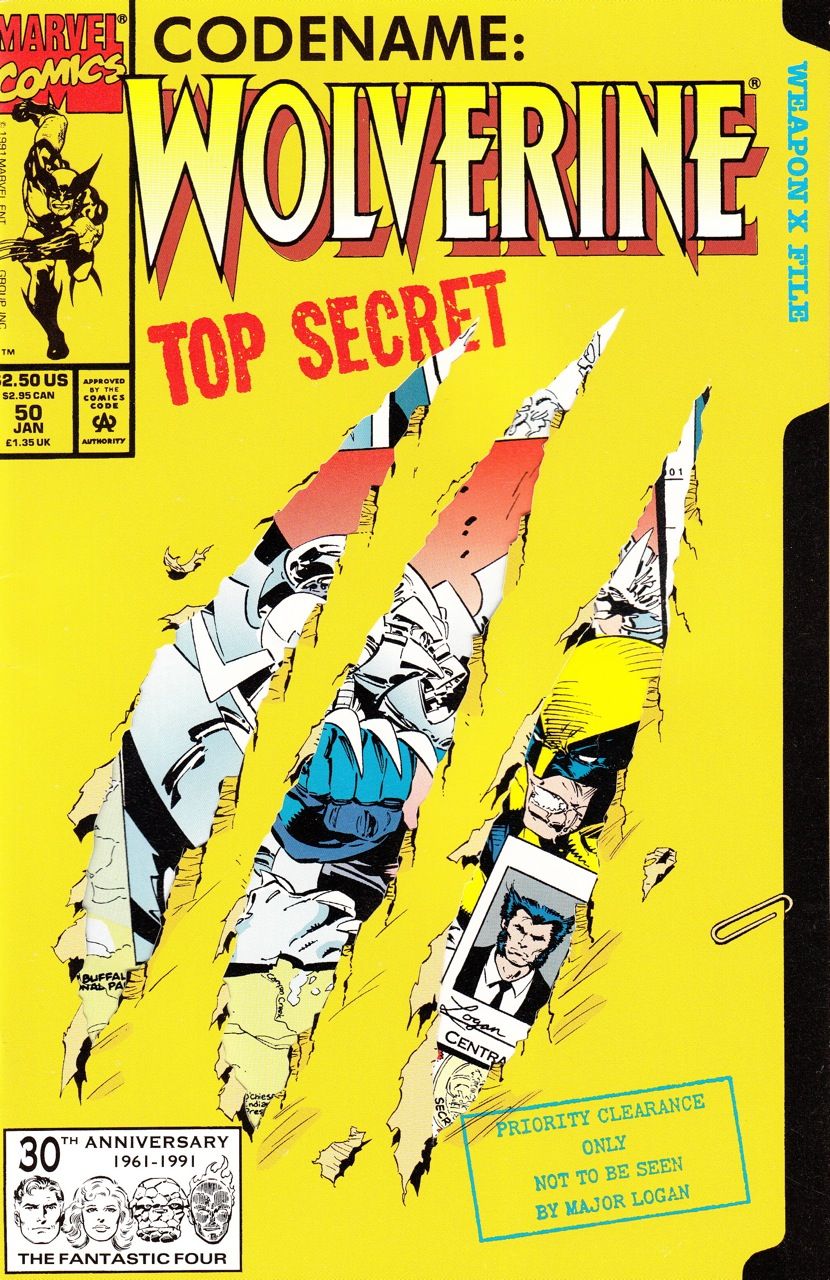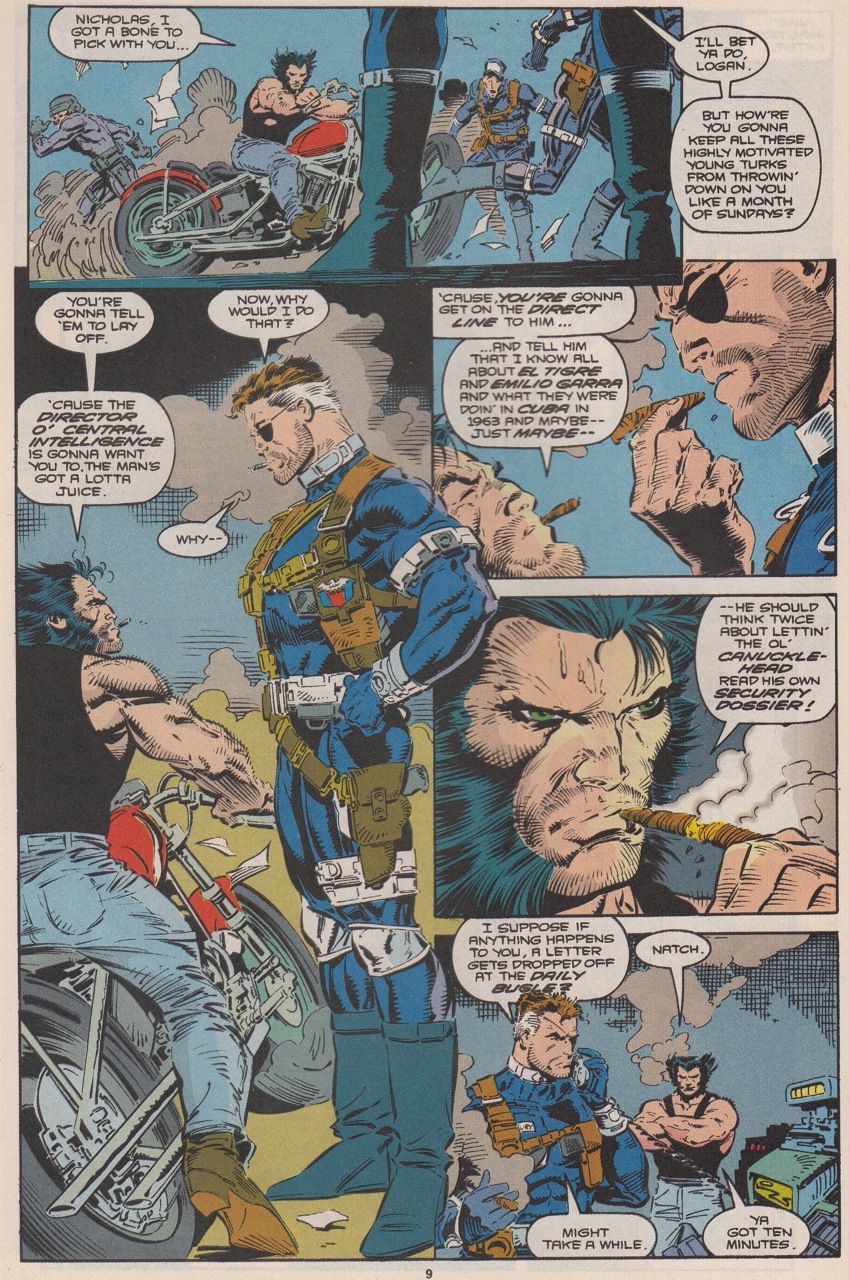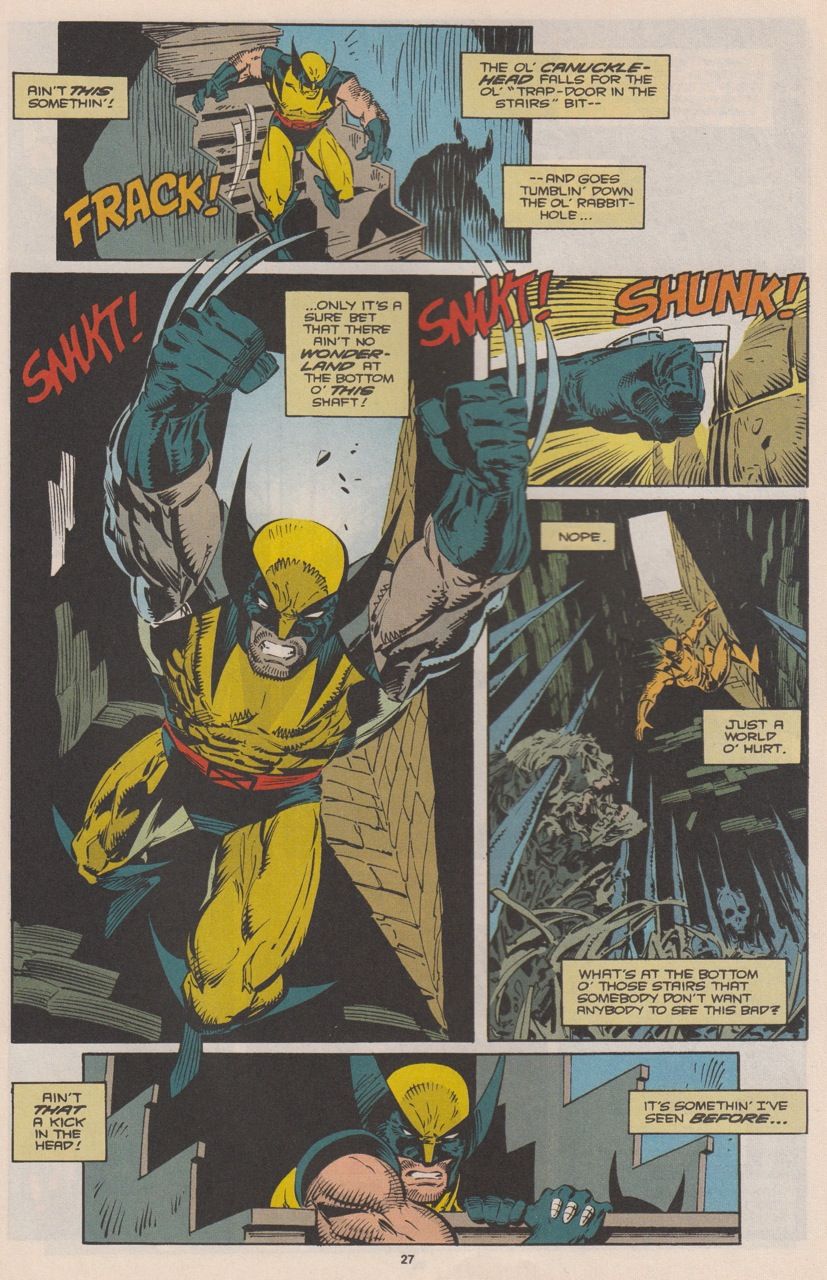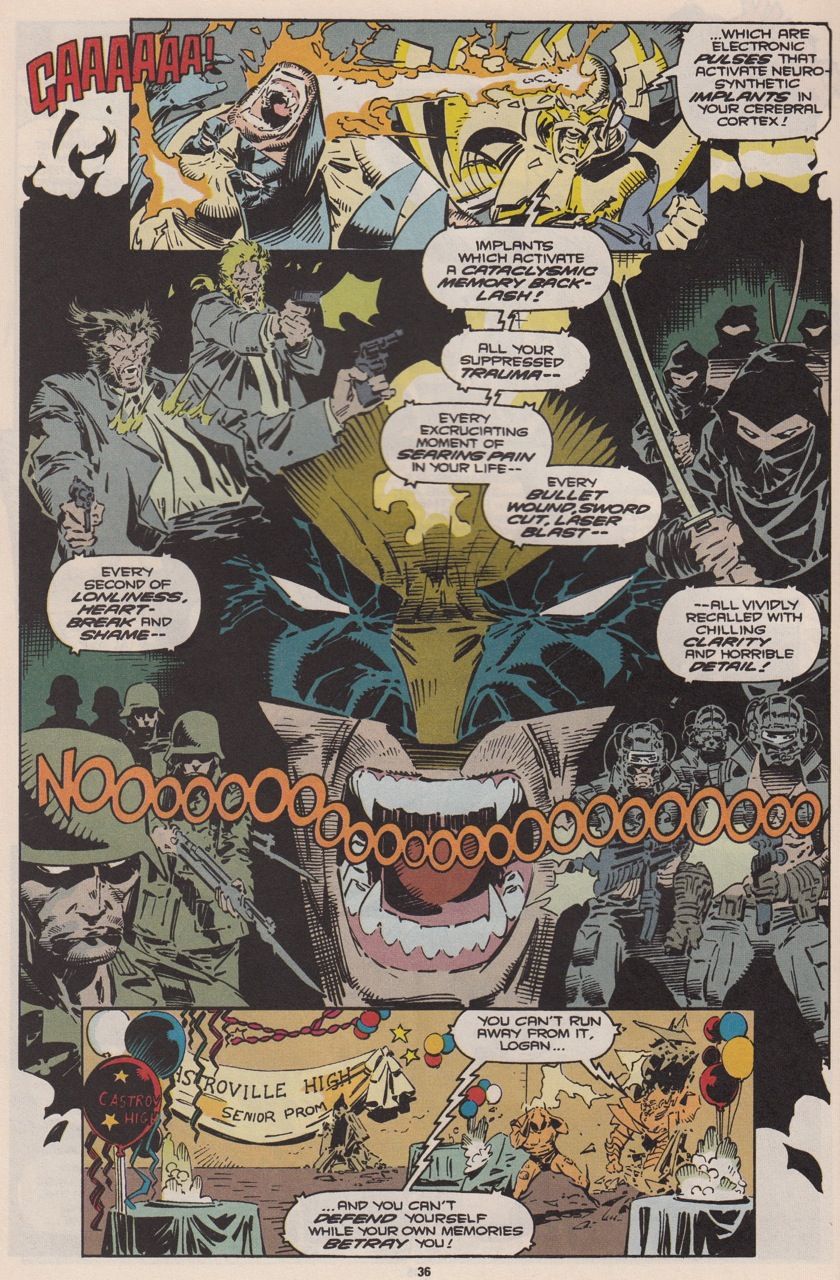In this column, Mark Ginocchio (from Chasing Amazing) takes a look at the gimmick covers from the 1990s and gives his take on whether the comic in question was just a gimmick or whether the comic within the gimmick cover was good. Hence "Gimmick or Good?" Here is an archive of all the comics featured so far. We continue with the die-cut cover for Wolverine #50.
Wolverine #50 (published January 1992) – script by Larry Hama, art by Marc Silvestri and Dan Green
After seeing that Wolverine got a brand-new ongoing series this week, I was inspired to take a look at one of the Ol’ Canucklehead’s very first gimmick covers, Wolverine #50. As the third part of the “Dreams of Gore” arc, a storyline that explores some “top secret” information about Logan’s Weapon X past, Wolverine #50 features a die-cut cover that resembles a “classified” file folder with claw marks leaving an opening in the front.
But what about inside the comic?
Just a few months removed from the publication of Barry Windsor Smith’s “Weapon X” arc in Marvel Comics Presents, “Dreams of Gore” was marketed as an official “sequel” to the storyline when it kicked off in Wolverine #48. At the state of the sequel, Wolverine and Jubilee explore an abandoned facility in Alberta, Canada, when Wolvie starts to have violent flashbacks to his Weapon X days. In the next issue, Wolverine asks Professor X and Jean Grey to telepathically explore his memories in order to explain the flashbacks. During the process, Logan becomes more animalistic and violent, but vows to keep digging into his past, bringing us to Wolverine #50, when everything hits the fan and Wolverine discovers exactly what the “Shiva Initiative” is all about.
Those who maintain that Wolverine has been completely overexposed and overdone the past 25 years, probably have a hard time remembering when a story about the character’s mysterious past could be labeled as fresh and exciting, but that’s exactly what Larry Hama and Marc Silvestri deliver in this arc and specifically in this issue. The comic is not without its flaws, but it is also the kind of well-executed, genuinely fun story that helped make Wolverine arguably Marvel’s most popular and profitable property during the 90s (and beyond).
Throughout “Dreams of Gore,” Hama establishes a swagger with Wolverine that makes the character a joy to read about. Whether he’s riding a motorcycle onto a S.H.I.E.L.D. helicarrier in order to confront Nick Fury (a scene made funnier in how Silvestri emphasizes the height difference between Logan and Nick), or how he bursts into the U.S. Department of Agriculture in order to speak to the director of the “pest control section” (the cover name for the Weapon X project), making sure to tell the churlish receptionist “I ain’t here to lobby for soybean subsidies,” Wolverine just oozes charisma without it coming across as insufferably overindulgent.
And while Wolverine might have the snappy comebacks and the “I’m the best there is” machismo, the script never gives the titular character too much credit. In one scene, Wolverine carelessly “falls for the ol’ trap door in the stairs bit,” nearly getting impaled by a room full of spikes as a result. The scene comes and goes so quickly, I don’t get the impression that readers are supposed to buy into the idea that Wolverine could be killed by such a clichéd trap, but it does demonstrate how his unyielding determination to get to the bottom of his tortured past has sapped him of his focus, ultimately setting up Logan’s pyrrhic victory at the end of the issue.
The comic’s big confrontation is between Wolverine and Shiva, a cyborg designed to kill Weapon X’s participants (there’s even a list prioritizing who dies first, and Logan’s name is at the top, ‘natch). Wolverine dispatches of Shiva pretty quickly, only for it to recouperate and start “round two,” this time having learned from its mistakes. Shiva hits Wolverine with an electronic pulse that triggers neurosynethtic implants in Logan’s brain, bringing on a rush of buried memories, and driving Wolvie to the brink of insanity.
He manages to channel his rage long enough to destroy Shiva, but his X-Men teammates find a “far different man” at the very end of the story. Given how well the comic’s plot builds and accelerates, the last page comes across a bit too overstuffed. All on one page, we learn that the evil Professor Hudson, father of Weapon X, has been killed, but not before activating additional Shiva robots to kill other Weapon X participants (such as Sabertooth). When Jean and Professor X mention that innocent mutants may be targeted by the Shiva robots, Wolverine is apathetic. Considering how the scripts sells Wolverine’s reaction as a turning point for the character, I have to think the moment would have more gravitas if it developed over the course a of a few pages, with a little bit more of Silvestri’s art driving it.
As for Silvestri, I enjoy his straightforward pencils throughout the issue. While he’d go on to be one of the founding members of Image Comics in 1992, I find Silvestri to be far less stylized than some of his colleagues (i.e. Jim Lee and Rob Liefeld). As a result, the art never distracts from or overshadows Hama’s solid script.
Verdict: Good

